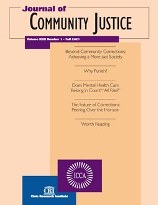Changing Lives and Changing the Way Nonprofits Do Business
Author: Larry Fehr, M.P.A..
Source: Volume 17, Number 02, Winter 2008 , pp.21-23(3)

< previous article |next article > |return to table of contents
Abstract:
Pioneer Human Services does not see itself as a “charity” in any sense other than that it serves people on the margins of society. It is a “social enterprise”—a company that has a double bottom-line, its mission and its financial success. Consider Mary (not her real name). In her twenties, street smart, and living the fast life in Seattle, Mary owned a Porsche and by material standards was already a success. She was also a cocaine addict. Mary found that by selling the drug she could easily make $10,000 a month—that was, until her conviction for selling drugs landed her in the Washington Correctional Center for Women. Mary didn’t handle the culture shock well. She reached rock bottom when she was placed in “the hole,” a solitary confinement cell reserved for unruly inmates. Now, fast-forward a decade. Mary is a successful senior vice president of a company where she is responsible for a construction business and real estate properties worth more than $40 million! This is not a hypothetical story . . . it is the truth. The company she works for is a nonprofit organization, Pioneer Human Services. How did Mary’s transformation take place? In the words of the title of a movie from a few years ago, “There’s something about Mary,” but Mary would be the first to admit that there’s also something special about Pioneer.Keywords:
Affiliations:
1: Pioneer Human Services.